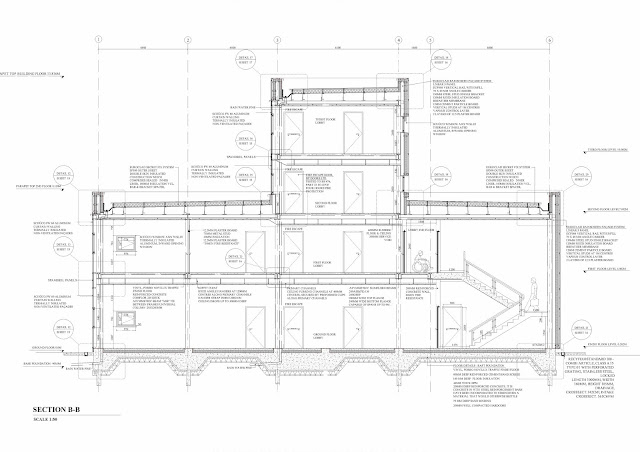GMIT Arch. Techn. Four Year | Design & Details Studies Project
Autodesk Revit | Hempcrere & Timber Frame Building Fabric
There is growing concern about the impact of human activity on the Earth’s resources. Utilising resources in a sustainable manner is a challenge; it involves considering every point of their life-cycle, avoiding over-exploitation and reducing the environmental and social impact of their use. Some renewable building materials can provide simple solutions. For example, hemp and lime “hempcrete” is a material that produces Zero Carbon Buildings and has excellent insulation and air-tightness qualities.
The dissertation “Hempcrete: a viable building material for use in the construction industry in Ireland", analyses the advantages and disadvantages of hempcrete and the growing use of this product in the country, taking as a case study Ballyglunin Art Gallery.
This project involves the restoration, extension and changing of the use of a goods shed to an art gallery with three art studios at Ballyglunin Railway Station, Co. Galway. The building is designed to meet the requirements of TGDs Building Regulations for public buildings with protected structures. The proposed extension buildi ng is a timber frame covered with hempcrete.
West Elevation
East Elevation
Sustainable development
“The development that meets the needs of the present without compromising the ability of future generations to meet their own needs”. The World Commission on Environment and Development (WCED)
Hemp-Lime “Hempcrete”
Hempcrete is a renewable material composed by the mixture of the woody core of the hemp plant, also known as ‘hurd’ or ‘shiv’ and a lime based binder with the addition of water.
Hempcrete is rigid lightweight material that is infill cast or sprayed around a timber framework for walls, roof and floors.
Hempcrete creates a breathable building fabric as it allows moisture-laden air to pass through the structure, while maintaining thermal properties that insulation and durability.
Hempcrete Corner Wall Plan detail





























